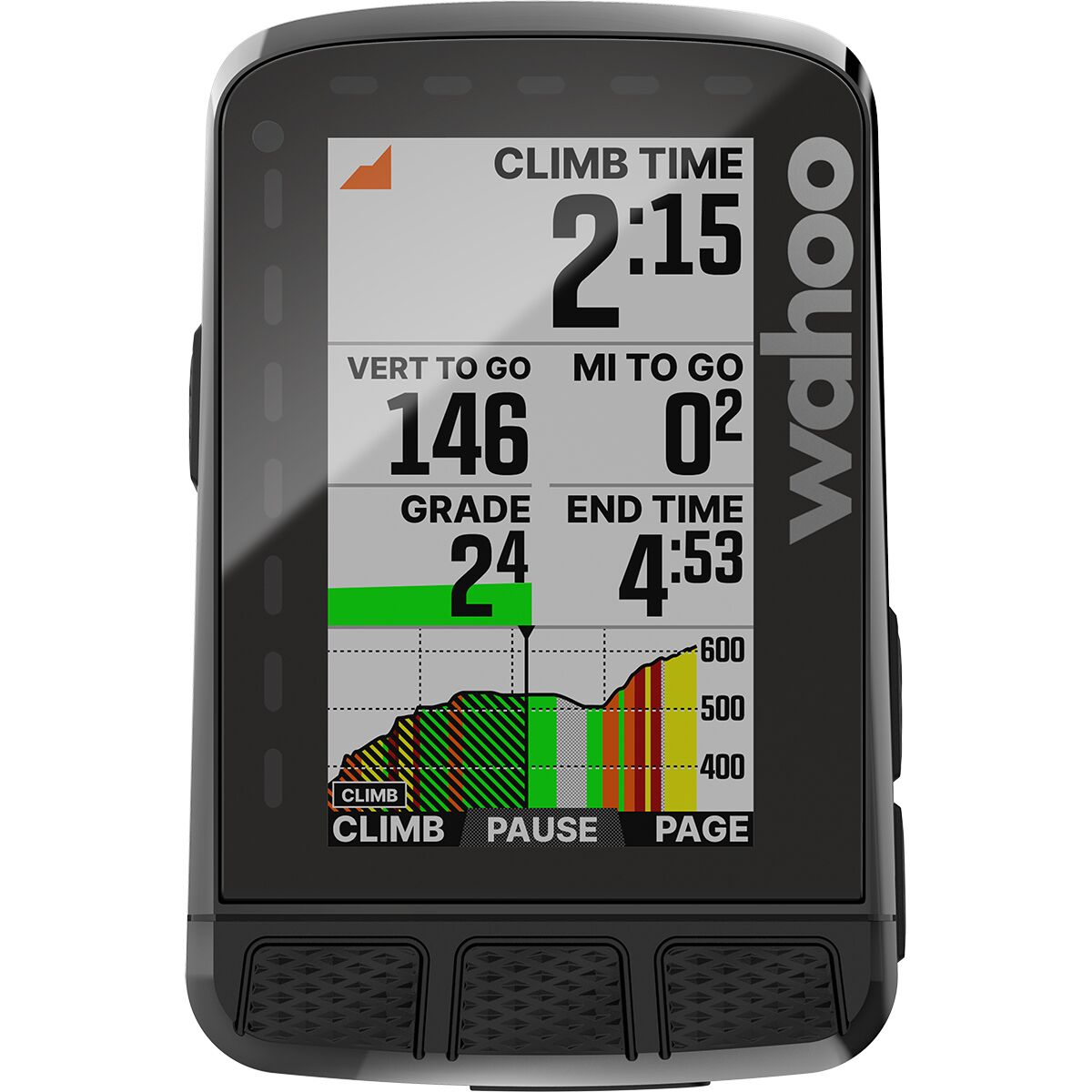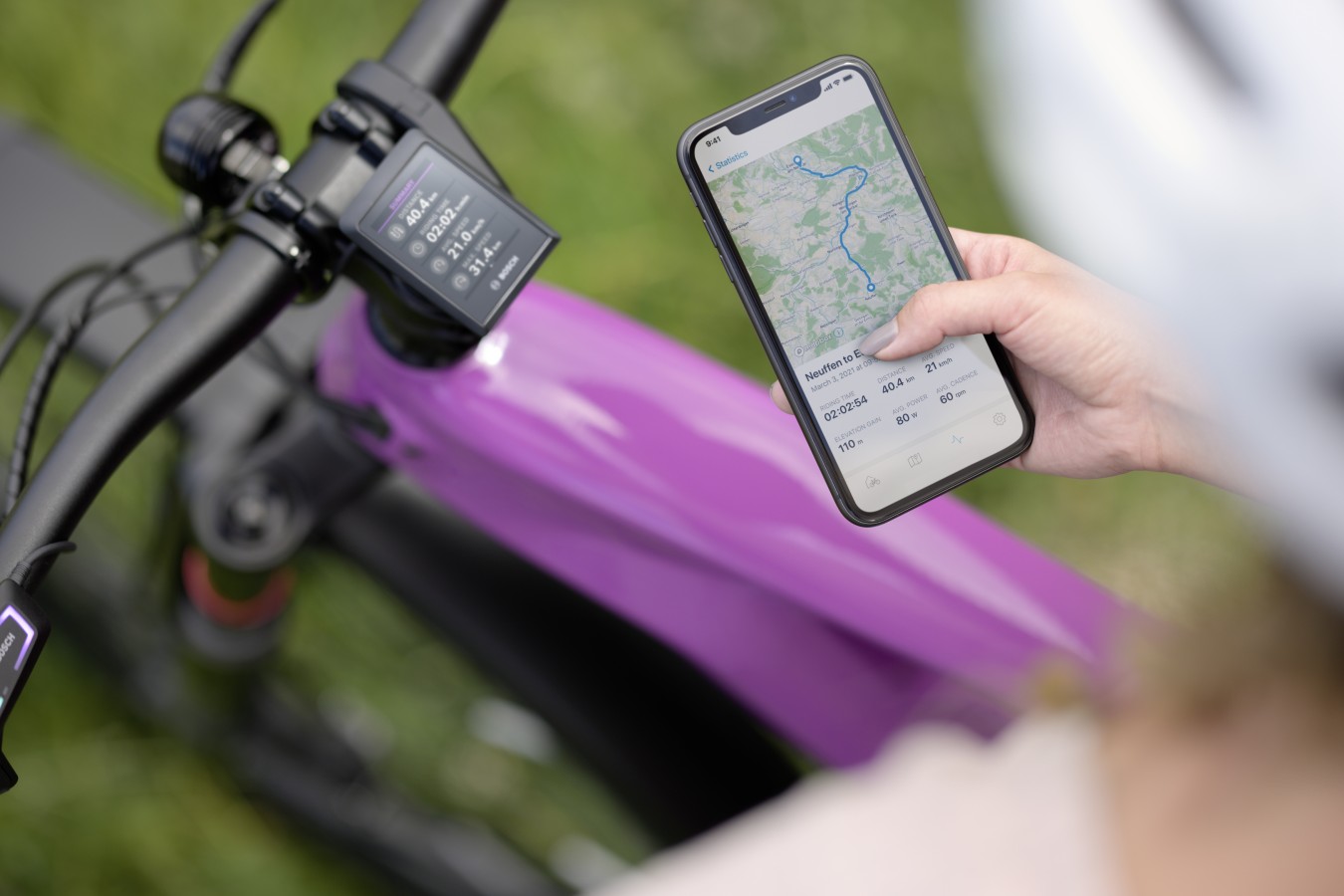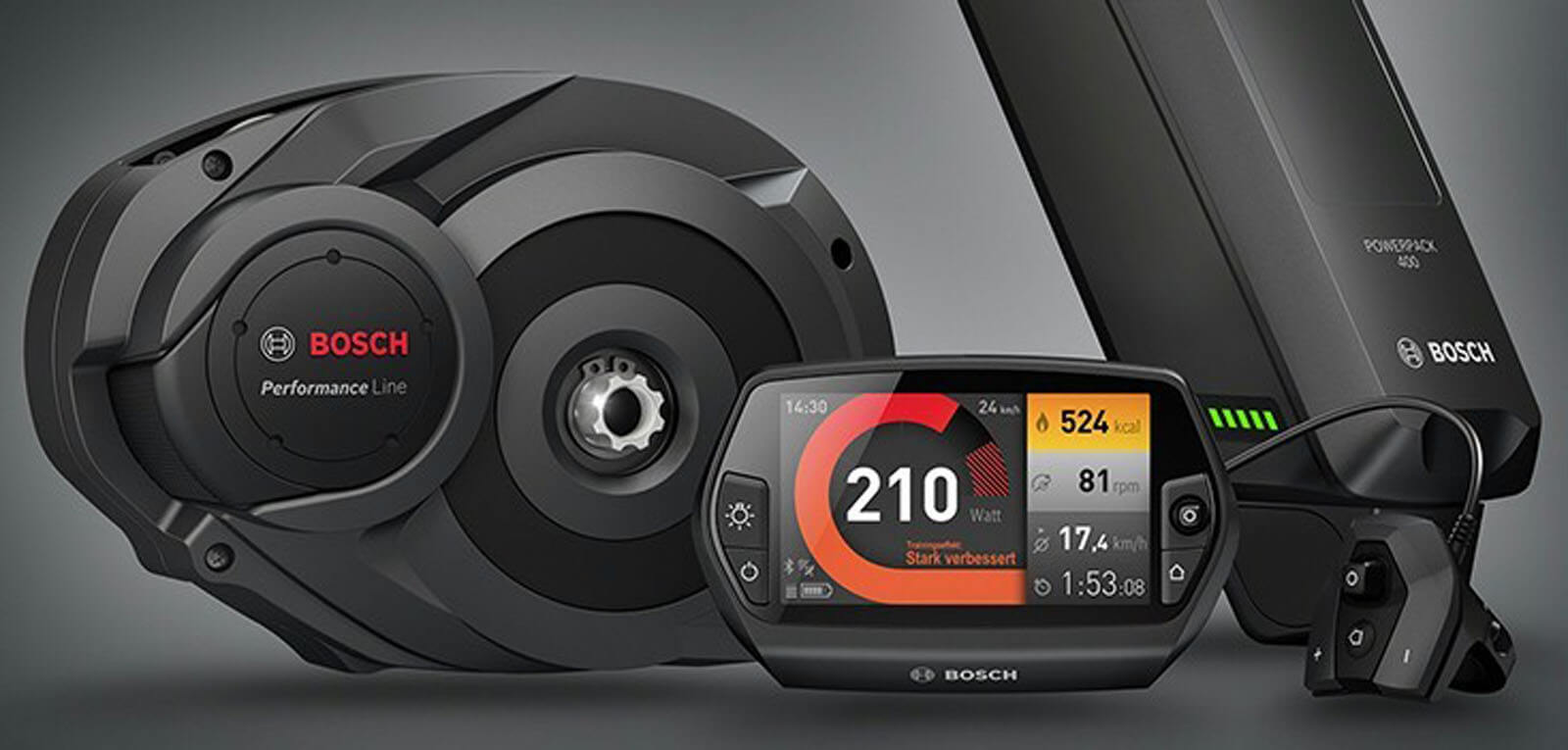What are Smart eBike Navigation Systems?
Smart eBike navigation systems are advanced devices that provide GPS tracking, route planning, and connectivity with other devices to enhance the eBike experience. These systems offer a wide range of features, such as real-time traffic updates, weather forecasts, and fitness tracking, making them an essential tool for eBikers who want to explore new routes and monitor their performance. The key benefits of smart eBike navigation systems include improved safety, convenience, and efficiency. With turn-by-turn directions, eBikers can focus on the road and enjoy the ride without worrying about getting lost. These systems also allow riders to customize their data fields, such as speed, distance, and elevation, and share their rides with friends and family.
Moreover, smart eBike navigation systems can integrate with various sensors, such as heart rate monitors, cadence sensors, and power meters, to provide a comprehensive overview of the rider’s performance. Some systems also offer Bluetooth and ANT+ connectivity, enabling riders to control their music, answer phone calls, and receive notifications directly from their devices.

How to Choose the Right Smart eBike Navigation System
Smart eBike navigation systems offer a wide range of features and benefits, making it essential to consider several factors when selecting the right one for your needs. Here are some key considerations to keep in mind: Compatibility with your eBike: Ensure that the navigation system is compatible with your eBike’s make and model. Some systems may require specific connectors or adapters, while others may be plug-and-play.
Ease of use: Look for a system with a user-friendly interface that is easy to navigate, even when you’re on the move. The system should have clear and concise instructions, with intuitive menus and buttons.
Battery life: Consider the battery life of the system, as this will impact how long you can use it before needing to recharge. Look for a system that offers a long battery life, ideally several hours, to ensure that you don’t run out of power during your ride.
Cost: Smart eBike navigation systems can vary significantly in price, so it’s essential to set a budget before making a purchase. Consider the features and benefits of each system and choose one that offers the best value for money.
Accurate GPS tracking: Look for a system with accurate GPS tracking, as this will ensure that you always know where you are and can follow your route with confidence. Check user reviews to see if the system has a reputation for accurate GPS tracking.
Connectivity with other devices: Consider a system that can connect with other devices, such as your smartphone or heart rate monitor, to provide a more comprehensive overview of your ride. Look for a system that supports Bluetooth and ANT+ connectivity.
User-friendly interfaces: Choose a system with a user-friendly interface that is easy to read and navigate, even in bright sunlight or low light conditions. Look for a system with customizable data fields, so you can see the information that is most important to you.
Real-time traffic updates: Consider a system that offers real-time traffic updates, as this can help you avoid congested routes and save time on your ride.
Weather forecasts: Look for a system that provides weather forecasts, as this can help you plan your ride and avoid adverse weather conditions.
Fitness tracking: Consider a system that offers fitness tracking, as this can help you monitor your progress and set goals for your rides.
Third-party app integration: Look for a system that can integrate with third-party apps, such as Strava or TrainingPeaks, to provide a more comprehensive overview of your rides and performance.

Exploring the Best Smart eBike Navigation Systems: A Comprehensive Guide
What are Smart eBike Navigation Systems?
Smart eBike navigation systems are devices that provide turn-by-turn directions, GPS tracking, and connectivity with other devices to enhance the eBike riding experience. They offer a range of features and benefits, including real-time traffic updates, weather forecasts, and fitness tracking.
How to Choose the Right Smart eBike Navigation System
When selecting a smart eBike navigation system, consider factors such as compatibility with your eBike, ease of use, battery life, and cost. Look for a system with a user-friendly interface and accurate GPS tracking.
Top Smart eBike Navigation Systems in the Market
Some of the top-rated smart eBike navigation systems available in the market include the Garmin Edge 1030, Wahoo ELEMNT ROAM, Bryton Rider 750, Hammerhead Karoo 2, and Lezyne Mega XL. These systems offer a range of features and benefits, including high-resolution displays, long battery life, and integration with third-party apps.
Garmin Edge 1030: A Detailed Review
The Garmin Edge 1030 is a high-end smart eBike navigation system that boasts a high-resolution touchscreen, advanced navigation capabilities, and compatibility with various sensors. Its battery life is up to 20 hours, making it ideal for long-distance rides.
Wahoo ELEMNT ROAM: A Comprehensive Look
The Wahoo ELEMNT ROAM is a user-friendly smart eBike navigation system that features a customizable data field, a crisp black and white display, and integration with third-party apps. Its battery life is up to 17 hours, and it is easy to set up and use.
Bryton Rider 750: A Closer Inspection
The Bryton Rider 750 is a compact and affordable smart eBike navigation system that offers a long battery life of up to 32 hours. However, it has limited compatibility with non-Bryton sensors, and its navigation features are more basic compared to other options.
Alternatives to Dedicated Smart eBike Navigation Systems
Alternatives to dedicated smart eBike navigation systems include using your smartphone with a bike mount and a cycling app, or integrating your eBike with a smartwatch.
The Future of Smart eBike Navigation Systems
Future developments of smart eBike navigation systems may include voice control, augmented reality, and AI-powered route planning.

Garmin Edge 1030: A Detailed Review
Smart eBike navigation systems have become increasingly popular among eBikers, offering advanced features such as GPS tracking, route planning, and connectivity with other devices. Among the top-rated smart eBike navigation systems available in the market, the Garmin Edge 1030 stands out for its high-resolution touchscreen, advanced navigation capabilities, and compatibility with various sensors. In this review, we will take a closer look at the Garmin Edge 1030, highlighting its key features, pros and cons, and whether it’s worth the investment.
The Garmin Edge 1030 features a 3.5-inch high-resolution touchscreen that is easy to read even in bright sunlight. It offers advanced navigation capabilities, including turn-by-turn directions, round-trip course creation, and off-course recalculation. The device is also compatible with various sensors, such as heart rate monitors, speed sensors, and cadence sensors, allowing riders to track their performance and fitness levels.
One of the standout features of the Garmin Edge 1030 is its compatibility with the Garmin Connect app, which allows riders to plan and upload routes, track their rides, and analyze their performance data. The device also offers connectivity with other devices, such as smartphones and cycling computers, allowing riders to receive notifications, control their music, and share their rides on social media.
The Garmin Edge 1030 has a long battery life, lasting up to 20 hours on a single charge. It is also waterproof and has a durable design, making it suitable for use in various weather conditions. However, the device is on the pricier side, which may be a drawback for some riders.
Overall, the Garmin Edge 1030 is an excellent choice for serious eBikers who want a high-quality smart eBike navigation system with advanced features and connectivity options. Its high-resolution touchscreen, advanced navigation capabilities, and compatibility with various sensors make it a top pick for riders who want to track their performance and explore new routes. However, its high price point may be a drawback for some riders.
In conclusion, the Garmin Edge 1030 is a reliable and feature-rich smart eBike navigation system that is worth considering for serious eBikers. Its high-resolution touchscreen, advanced navigation capabilities, and compatibility with various sensors make it a top pick for riders who want to track their performance and explore new routes. However, its high price point may be a drawback for some riders.
Wahoo ELEMNT ROAM: A Comprehensive Look
Smart eBike navigation systems offer a range of features and benefits that can enhance the eBike experience, including GPS tracking, route planning, and connectivity with other devices. When selecting a smart eBike navigation system, it is essential to consider factors such as compatibility with your eBike, ease of use, battery life, and cost. Additionally, user-friendly interfaces and accurate GPS tracking are crucial features to look for.
One of the top-rated smart eBike navigation systems available in the market is the Wahoo ELEMNT ROAM. This device features a user-friendly interface, customizable data fields, and integration with third-party apps, making it a popular choice among eBikers.
The Wahoo ELEMNT ROAM has a compact design, making it easy to mount on your eBike’s handlebars. It features a high-resolution, anti-glare screen that is easy to read in various lighting conditions. The device is also compatible with a range of sensors, including heart rate monitors, speed sensors, and cadence sensors, allowing riders to track their performance and fitness levels.
One of the standout features of the Wahoo ELEMNT ROAM is its integration with third-party apps, such as Strava, Komoot, and Ride with GPS. This allows riders to plan and upload routes, track their rides, and analyze their performance data. The device also offers connectivity with other devices, such as smartphones and cycling computers, allowing riders to receive notifications, control their music, and share their rides on social media.
The Wahoo ELEMNT ROAM has a long battery life, lasting up to 17 hours on a single charge. It is also waterproof and has a durable design, making it suitable for use in various weather conditions. However, the device is on the pricier side, which may be a drawback for some riders.
When comparing the Wahoo ELEMNT ROAM with other smart eBike navigation systems, it stands out for its user-friendly interface and customizable data fields. Its integration with third-party apps is also a significant advantage, allowing riders to access a range of features and benefits. However, its high price point may be a drawback for some riders.
In conclusion, the Wahoo ELEMNT ROAM is an excellent choice for eBikers who want a high-quality smart eBike navigation system with a user-friendly interface, customizable data fields, and integration with third-party apps. Its long battery life, waterproof design, and compatibility with various sensors make it a reliable and feature-rich option. However, its high price point may be a drawback for some riders.

Bryton Rider 750: A Closer Inspection
When it comes to smart eBike navigation systems, the Bryton Rider 750 is a popular choice among eBikers due to its compact design, long battery life, and affordable price. This device offers a range of features and benefits that make it a suitable option for eBikers who want a reliable and cost-effective navigation system.
The Bryton Rider 750 has a sleek and compact design, making it easy to mount on your eBike’s handlebars. It features a high-resolution, anti-glare screen that is easy to read in various lighting conditions. The device is also compatible with a range of sensors, including heart rate monitors, speed sensors, and cadence sensors, allowing riders to track their performance and fitness levels.
One of the standout features of the Bryton Rider 750 is its long battery life, lasting up to 32 hours on a single charge. This makes it an excellent option for long-distance rides or multi-day tours. However, the device has limited compatibility with non-Bryton sensors, which may be a drawback for some riders.
The Bryton Rider 750 offers basic navigation features, including turn-by-turn directions and route planning. However, it lacks some of the advanced navigation capabilities of other smart eBike navigation systems, such as the Garmin Edge 1030 and the Wahoo ELEMNT ROAM.
When comparing the Bryton Rider 750 with other smart eBike navigation systems, it stands out for its long battery life and affordable price. However, its limited compatibility with non-Bryton sensors and basic navigation features may be drawbacks for some riders.
In conclusion, the Bryton Rider 750 is an excellent choice for eBikers who want a reliable and cost-effective smart eBike navigation system with a long battery life. Its compact design and compatibility with various sensors make it a suitable option for tracking performance and fitness levels. However, its limited compatibility with non-Bryton sensors and basic navigation features may be drawbacks for some riders.

Alternatives to Dedicated Smart eBike Navigation Systems
While dedicated smart eBike navigation systems offer a range of features and benefits, they may not be the right choice for every eBiker. Fortunately, there are several alternatives available that can provide similar functionality at a lower cost or with greater flexibility. One option is to use your smartphone with a bike mount and a cycling app. This can be a cost-effective solution, as many smartphones already have GPS capabilities and can be used with a variety of cycling apps, such as Strava, MapMyRide, and Ride with GPS. However, using your smartphone as a navigation system can have some drawbacks, such as shorter battery life and the need to protect your phone from the elements.
Another alternative is to integrate your eBike with a smartwatch. Many smartwatches, such as the Garmin Fenix 6 or the Apple Watch, have GPS capabilities and can be used to track your rides and provide turn-by-turn directions. This can be a convenient option for eBikers who already use a smartwatch for fitness tracking or other activities.
When choosing between these alternatives, it’s important to consider your specific needs and preferences. Dedicated smart eBike navigation systems may offer more advanced features and better integration with your eBike, but they can also be more expensive. Smartphone mounts and cycling apps can be a cost-effective solution, but may not be as durable or reliable as dedicated devices. Smartwatches can offer a convenient and portable solution, but may have limitations in terms of screen size and battery life.
Ultimately, the best choice will depend on your individual needs and budget. By considering the pros and cons of each option, you can choose the smart eBike navigation system that works best for you.

The Future of Smart eBike Navigation Systems
As technology continues to advance, we can expect to see some exciting developments in the world of smart eBike navigation systems. One potential innovation is voice control, which would allow eBikers to control their devices using simple voice commands. This could be especially useful for riders who need to keep their hands free for safety reasons, such as when navigating busy streets or rough terrain. Another possibility is the use of augmented reality (AR) to enhance the eBiking experience. AR could be used to display real-time information about the rider’s surroundings, such as nearby points of interest or potential hazards. This could help eBikers stay informed and make better decisions while on the road.
Artificial intelligence (AI) is also likely to play a role in the future of smart eBike navigation systems. AI-powered route planning could help eBikers find the most efficient and enjoyable routes based on their preferences and riding style. This could be especially useful for riders who are exploring new areas or trying to avoid crowded or congested roads.
However, these innovations also come with some challenges. For example, voice control and AR could require more advanced hardware and software, which could drive up the cost of smart eBike navigation systems. AI-powered route planning could also raise privacy concerns, as it would require access to detailed information about the rider’s location and preferences.
Despite these challenges, the potential benefits of these innovations are significant. By providing eBikers with more information and greater control over their rides, smart eBike navigation systems could help make eBiking safer, more enjoyable, and more accessible to a wider audience. As the eBike industry continues to grow and evolve, we can expect to see even more exciting developments in this space.


